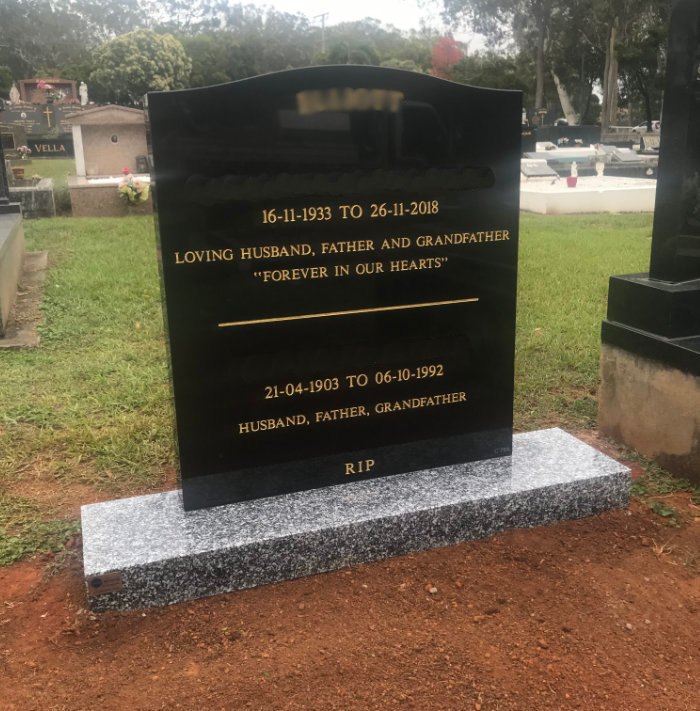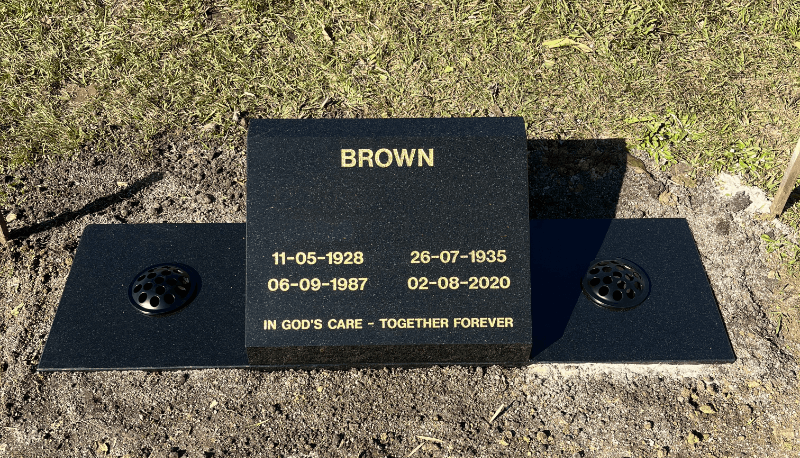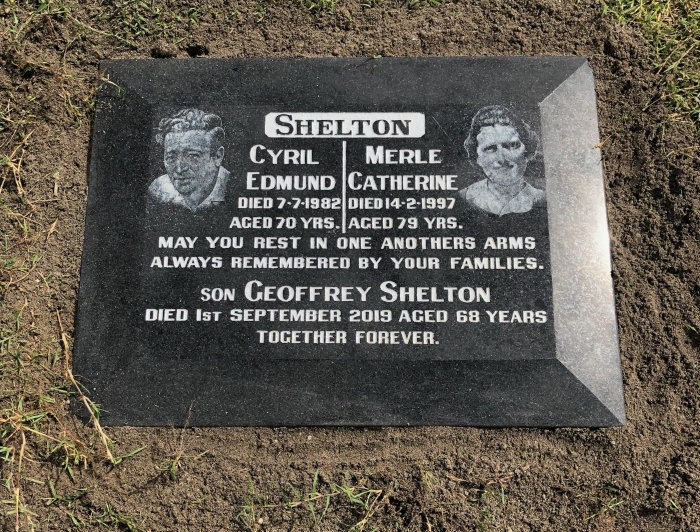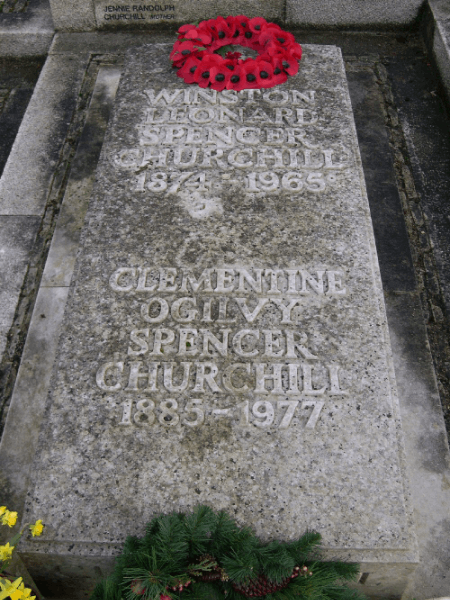What's the difference between a headstone & a tombstone?
The two terms headstone and tombstone are often used interchangeably in recent times to refer to the stone memorial at the head of a grave. Traditionally they referred to different types of grave memorials.
What is a headstone?
A headstone is a grave marker, usually made of stone, that is placed at the head of a grave. Headstones often have the deceased's name, birth and death dates, as well as an epitaph engraved on the stone. They can also include images of significance, ceramic photos of the deceased and plaques.
A headstone can be an upright stone or 'tablet', a slanted stone or one laid flat on the ground (the latter two are commonly used in lawn cemeteries).



What is a tombstone?
Tombstone originally referred to the stone lid of a stone coffin. Tombstones would often include inscriptions of the deceased's name, birth and death dates, as well as an epitaph.
The grave of Winston Churchill features a modern version, a chest tomb, which was a bottomless stone case placed over the underground burial.
Are you seeking a Professional to assist in creating a memorial or headstone?
Book an experienced memorial specialist here.

What sort of stone is a tombstone or headstone made of?
Both headstones and tombstones are often made from granite however other types of stone can be used including marble. Granite is a popular choice as it is hardwearing and offers a wide range of colour choices from reds and greys to black and brown.
Whichever term you use your monumental mason will discuss the options available to you at your chosen cemetery. Most Australian cemeteries have restrictions on what style of grave marker is allowed to be used.